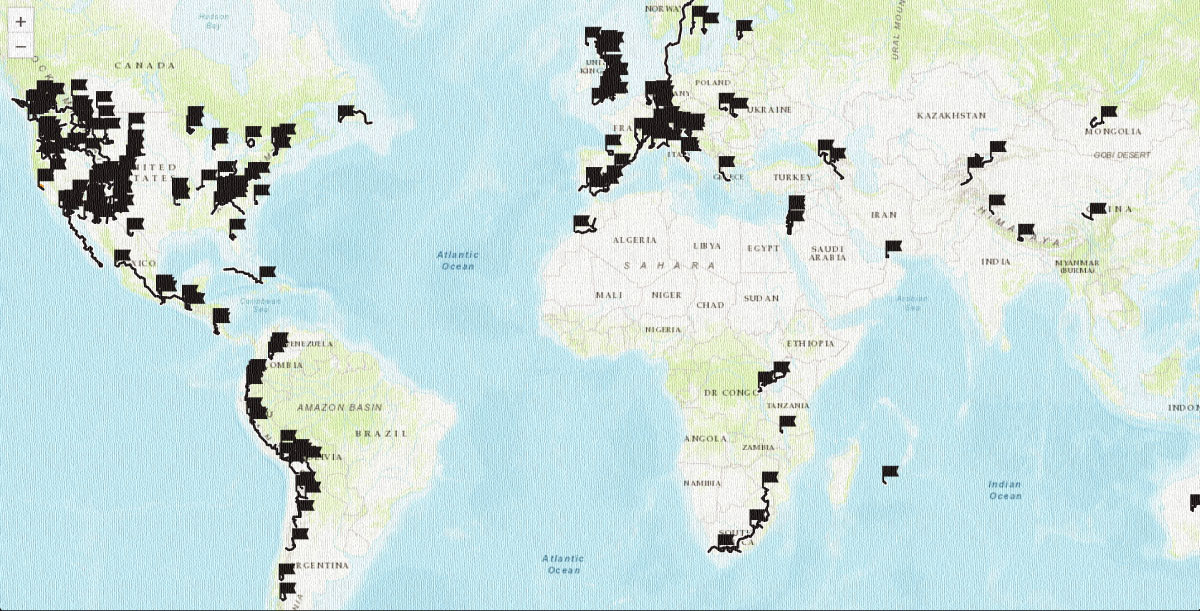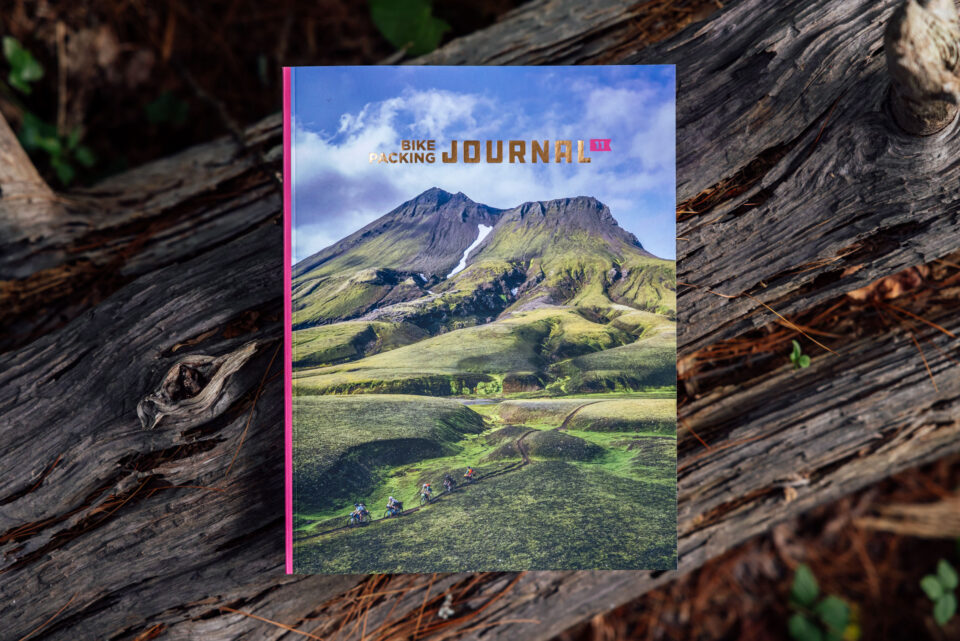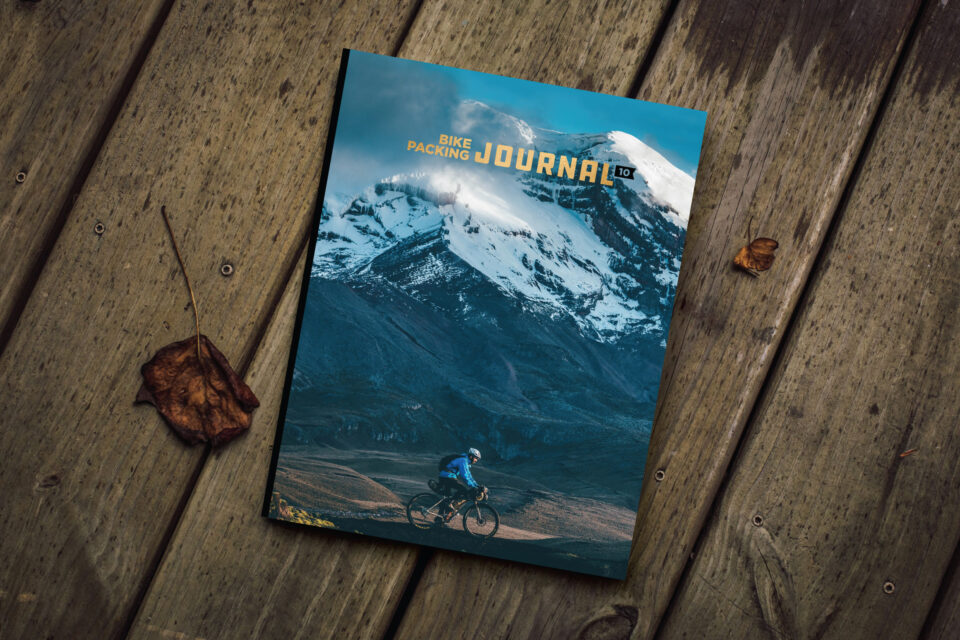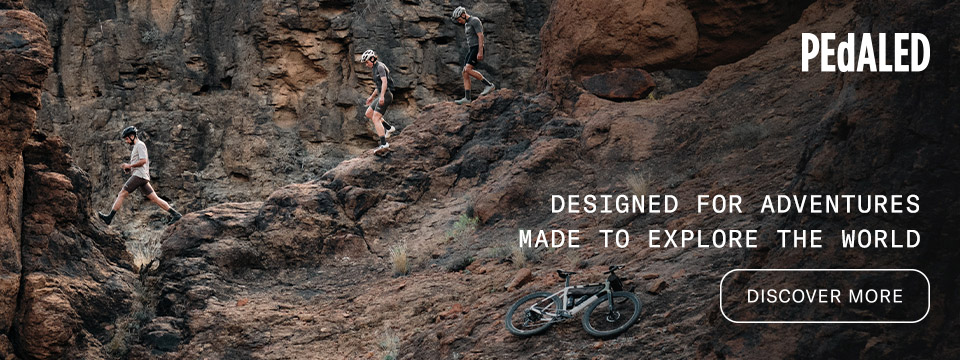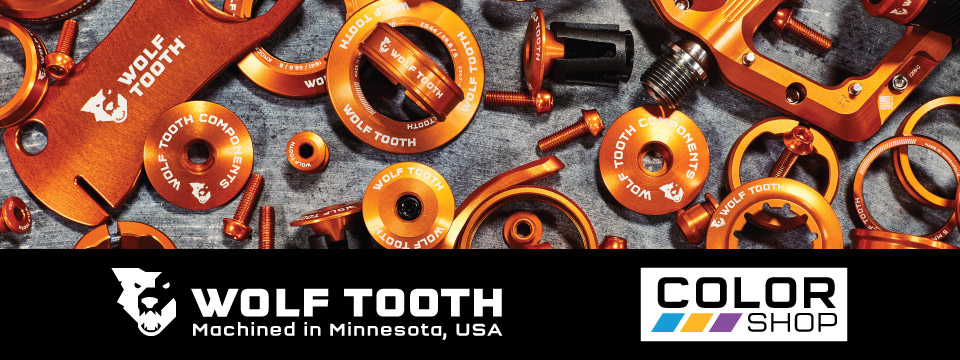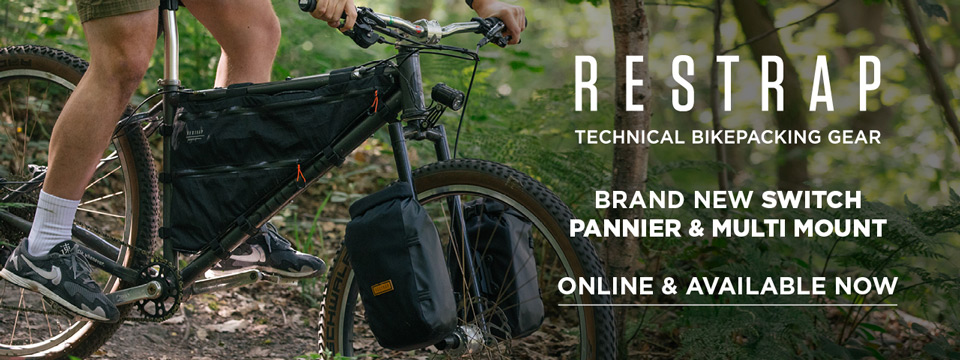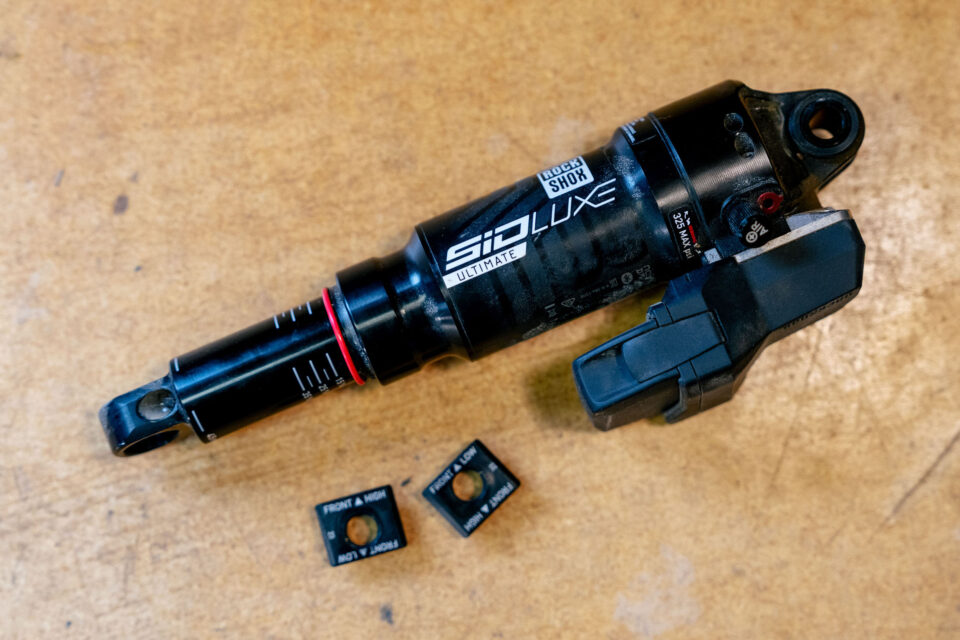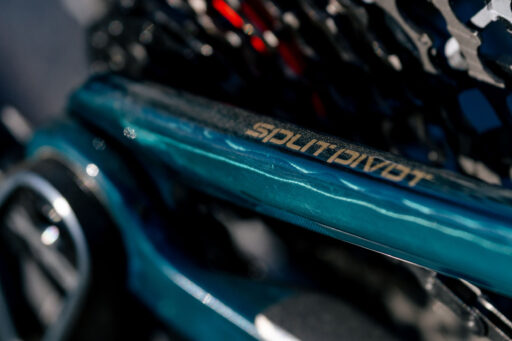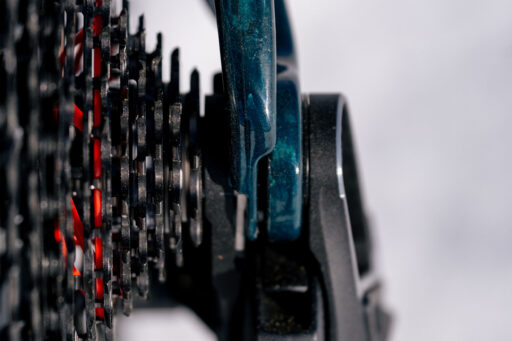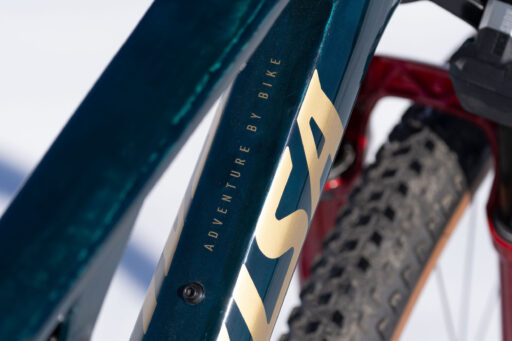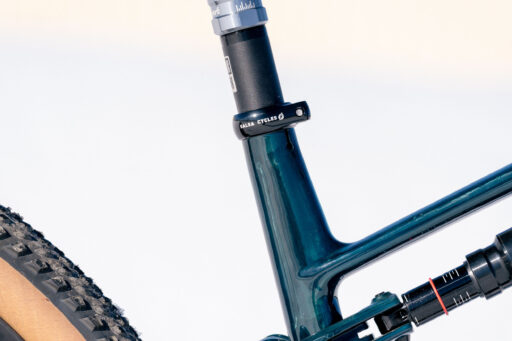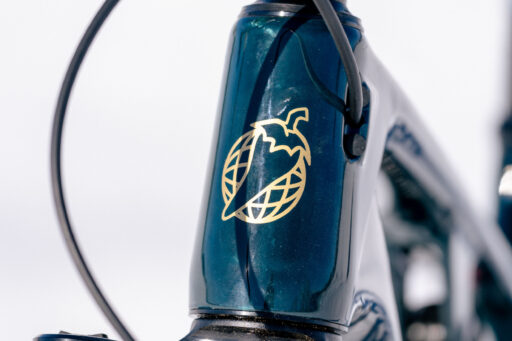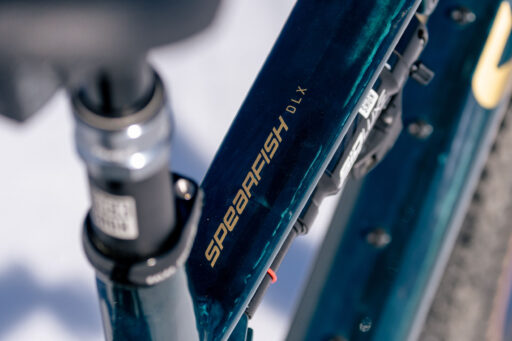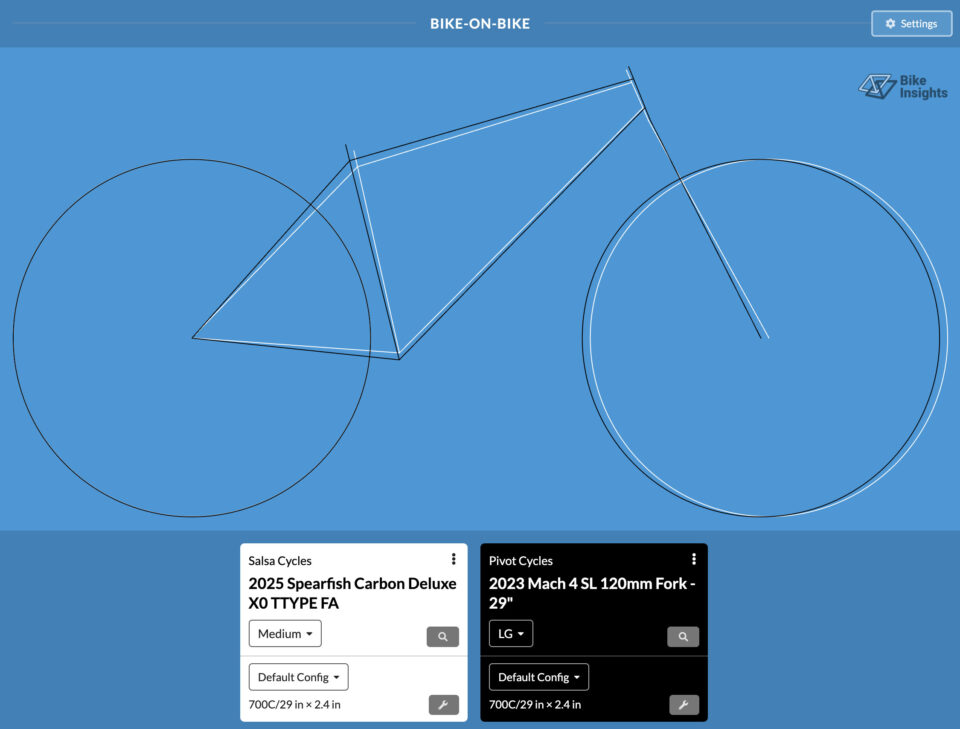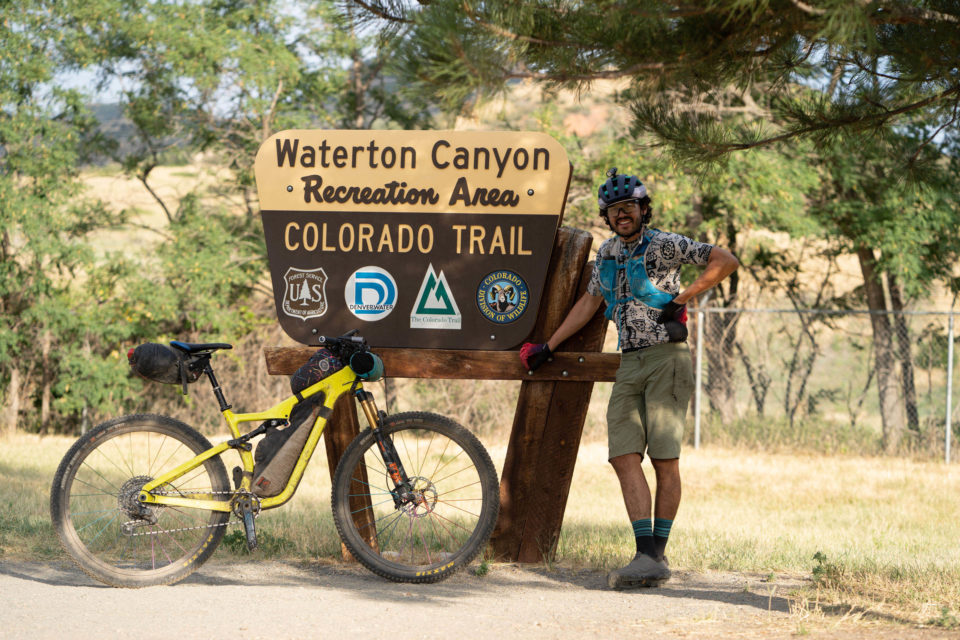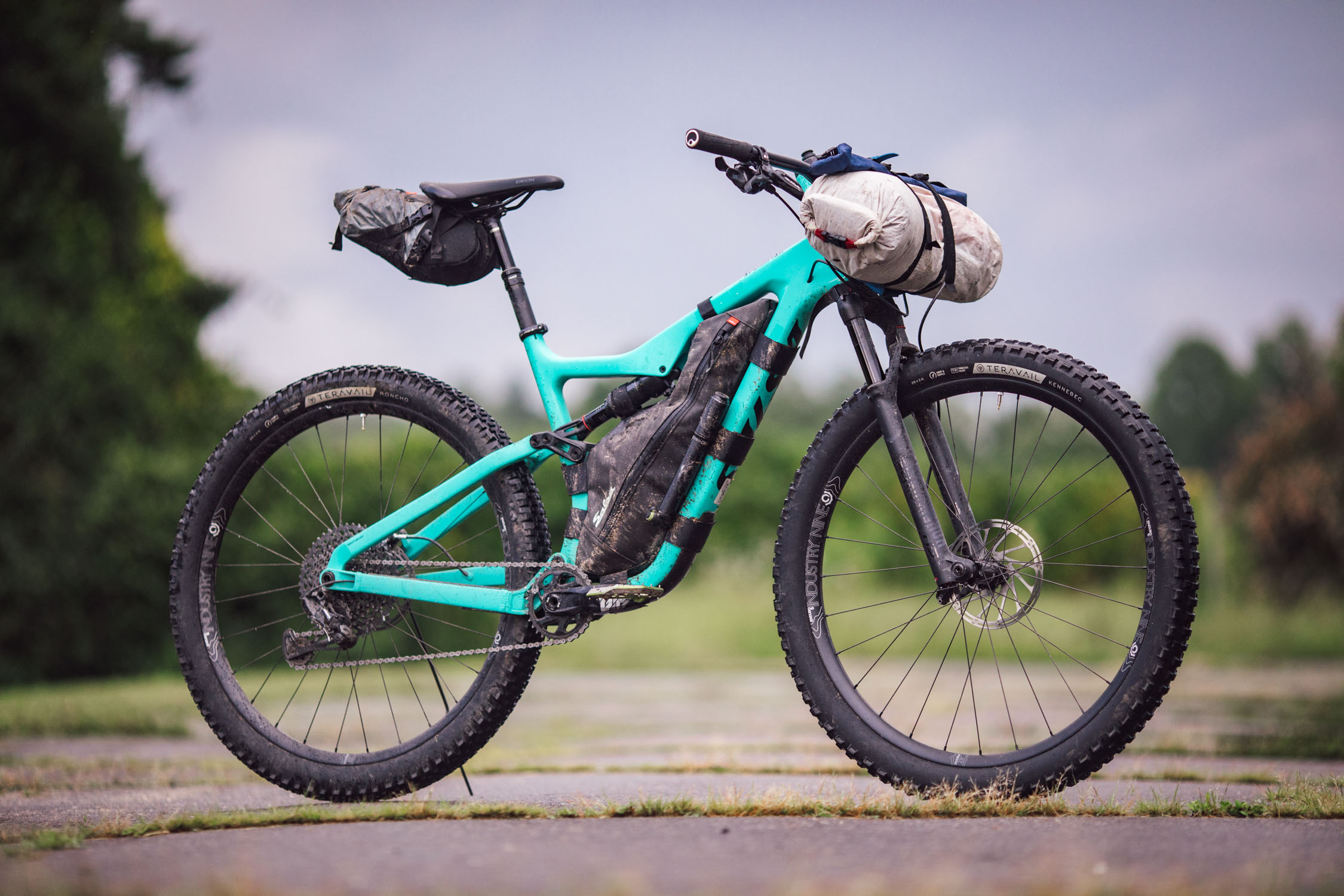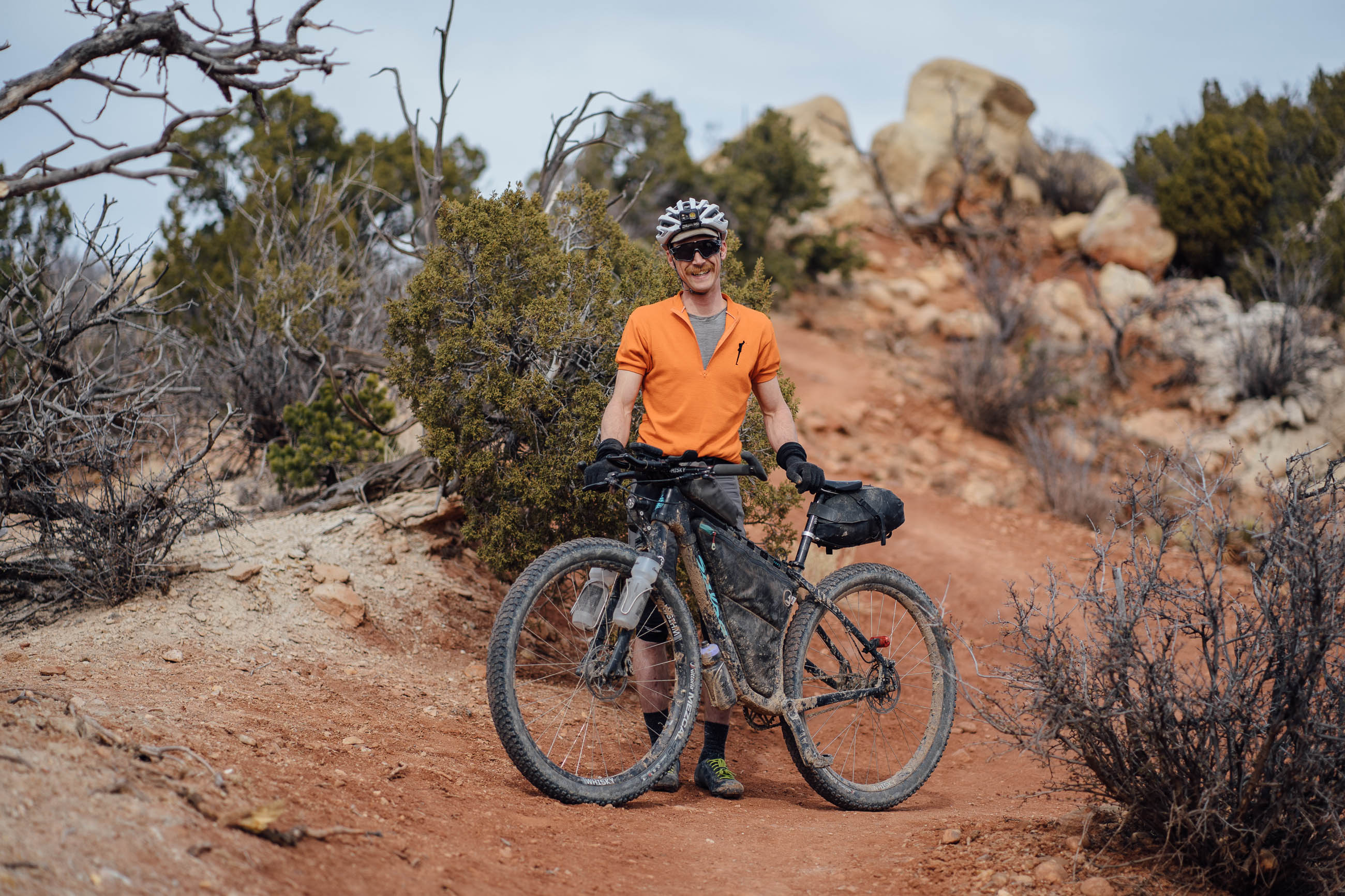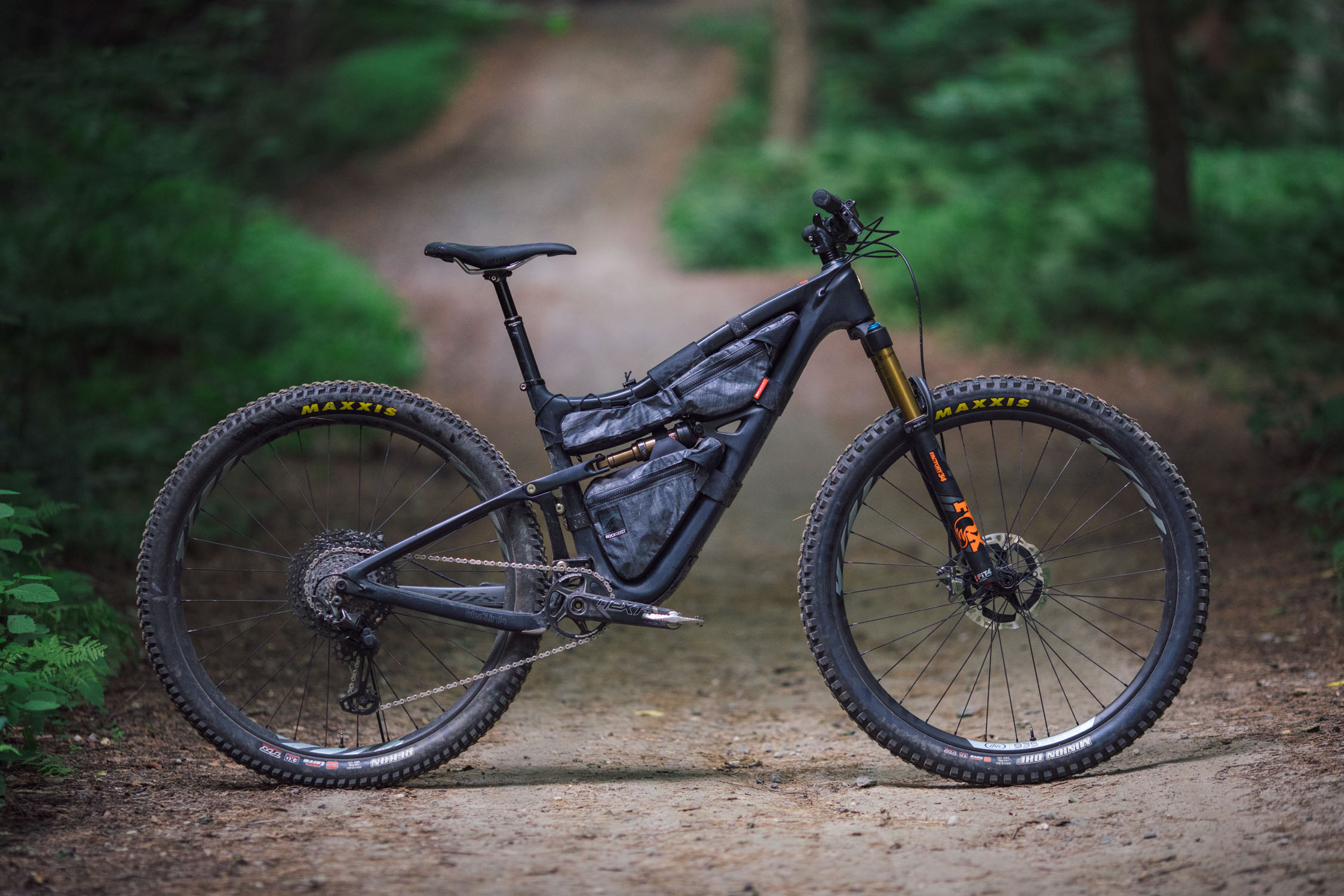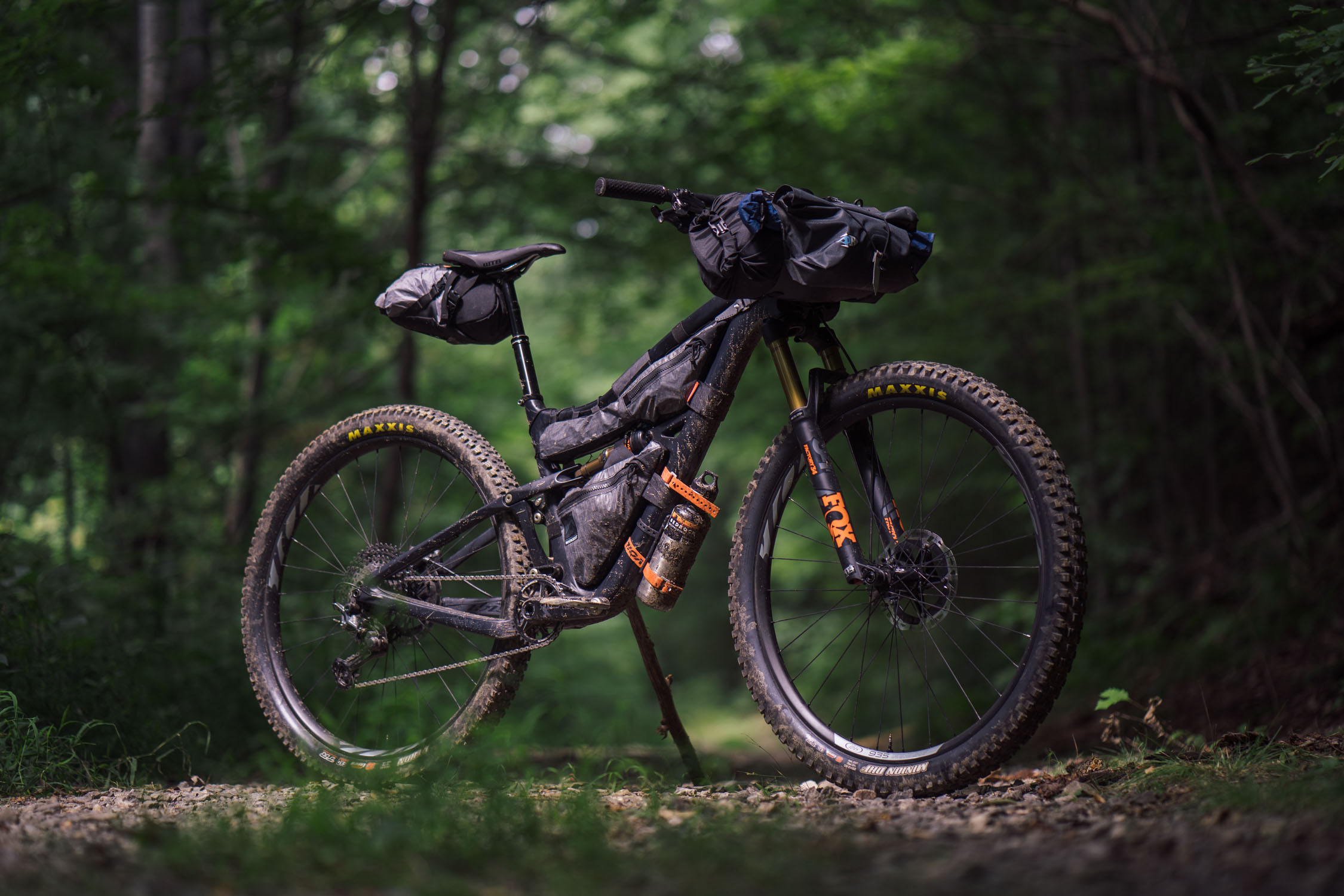2025 Salsa Spearfish C Review: Deluxe Revamp
The Spearfish has been Salsa’s XC-focused bike for more than a decade, and today, they launch the fourth iteration, an all-new short-travel full-suspension platform with adventure at its core. Neil’s been pedaling the redesigned 2025 Salsa Spearfish C for a couple of months for this review…
PUBLISHED Apr 10, 2025
Launched in 2011, the Spearfish has always been Salsa’s short-travel full-suspension bike. It has shared a similar design to that of the Horsethief over the years, at least until this latest iteration. The original Spearfish was an 80mm rear travel/100mm front travel XC bike with a single pivot design and flex stays instead of a pivoting rear axle. It was built around Salsa’s “Adventure by Bike,” tagline, but it clearly leaned toward speed and endurance racing—think popular 24-hour races of that era.
In 2014, they redesigned the bike with Dave Weagle’s Split Pivot system. The key change was the new pivot layout, placing the rearmost pivot directly in line with the rear axle. It was still aluminum and still had 80mm of rear travel, but the updated geometry made it more capable. A year later, a carbon version was introduced.
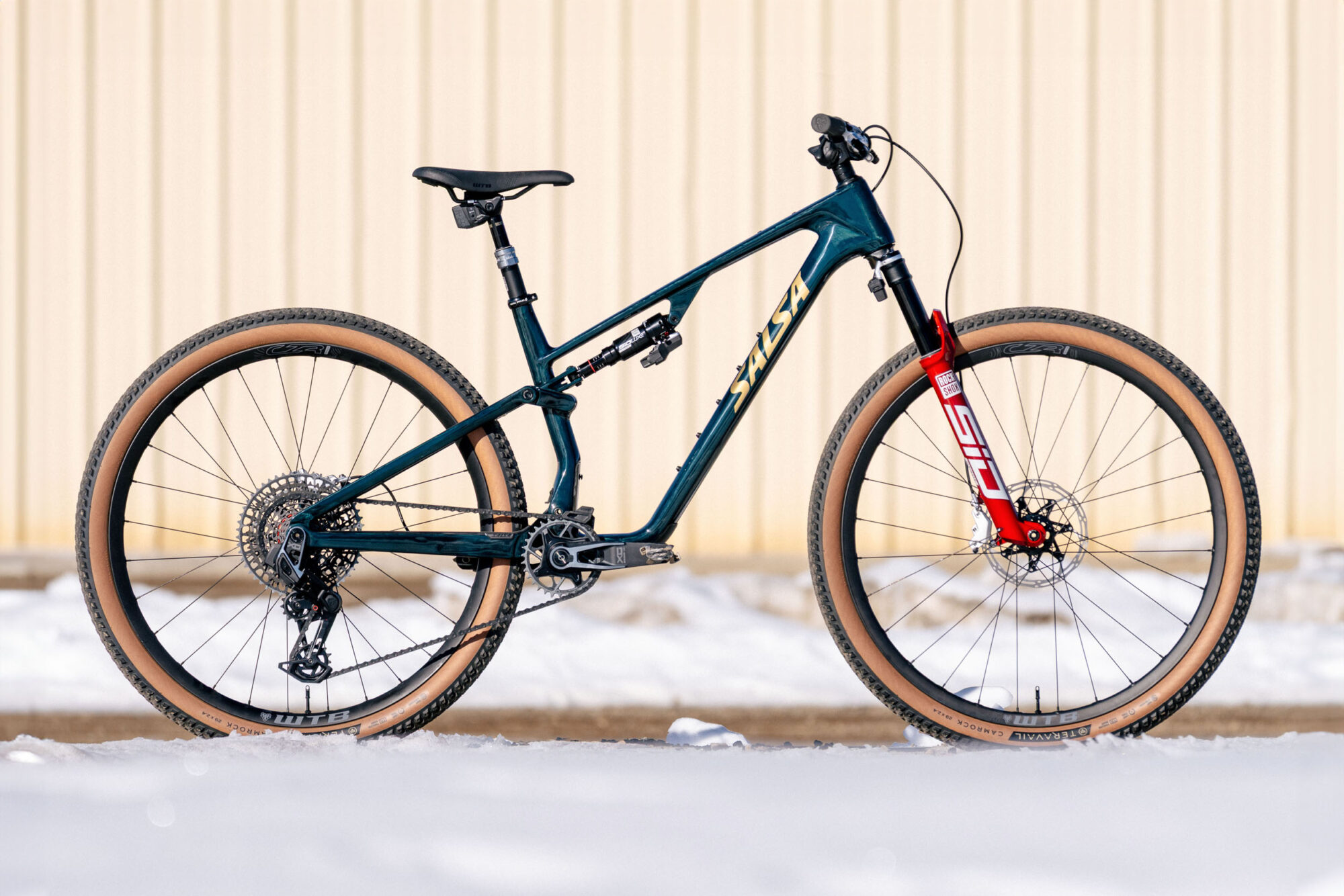
Fast forward to 2019, and the third iteration of the Spearfish was launched. Its industrial design stood out, but it also embraced more progressive, downcountry-style geometry for the time: 100mm of rear travel, 120mm up front, a flip chip, and a 67.8° head angle in the low setting. It also had a massive main triangle with room for two bottles on all sizes. Today, the 2025 Salsa Spearfish C marks the bike’s fourth iteration, boasting a total ground-up redesign. Watch the review below, and read on for a written version with all the specs and photos.
2025 Salsa Spearfish (Updates)
It’s been six years since we’ve seen a refresh of the Spearfish, and let’s be real, the world is a different place between the two bikes. But this new version is not only fun, but it’s also ahead of the curve. The geometry hits a sweet spot: efficient for long days in the saddle but far more capable than you’d expect from a traditional XC bike.
One of the biggest changes you’ll notice is in the stack and reach. The industry trend toward longer reach and lower stack is one of the best evolutions in bike design, in my opinion. I tested a Medium with a 470mm reach and 608mm stack. The result is a more aggressive, inspiring ride. The closer my hands are to the ground, the more connected I feel to the terrain.
Salsa Spearfish Geometry
| Size | XS | SM | MD | LG | XL |
|---|---|---|---|---|---|
| Effective Top Tube | 568/569 | 585/586 | 607/608 | 629/630 | 651/652 |
| Standover | 720/717 | 720/717 | 720/717 | 720/717 | 720/717 |
| Reach | 435/431 | 450/446 | 470/466 | 490/487 | 510/507 |
| Stack | 589/592 | 598/601 | 608/610 | 617/620 | 626/629 |
| Total Seat Tube Length | 380 | 405 | 430 | 455 | 480 |
| Headtube Length | 95 | 105 | 115 | 125 | 135 |
| Head Tube Angle | 66.3°/66° | 66.3°/66° | 66.3°/66° | 66.3°/66° | 66.3°/66° |
| Seat Tube Angle | 77.3°/77° | 77.3°/77° | 77.3°/77° | 77.3°/77° | 77.3°/77° |
| BB Drop | 31/35 | 31/35 | 31/35 | 31/35 | 31/35 |
| BB Height | 343/349 | 343/349 | 343/349 | 343/349 | 343/349 |
| Chainstay Length | 430/431 | 430/431 | 430/431 | 430/431 | 430/431 |
| Fork Length Axle to Crown | 531 | 531 | 531 | 531 | 531 |
| Fork Offset | 44 | 44 | 44 | 44 | 44 |
| Wheelbase | 1157/1158 | 1176/1177 | 1200/1201 | 1224/1225 | 1248/1249 |
With a long front center and a short stem, the bike inspires confidence, whether descending fast terrain or picking through low-speed tech. Even with a relatively high 31mm bottom bracket drop, it still feels planted but retains a certain playful characteristic not found on any bike I’ve pedaled in this category. The 430mm chainstays and 770mm front center combine for a 1,200mm wheelbase in the high flip chip setting. And with a 66.3° head angle and 77.3° seat angle, this bike is clearly not your average XC race rig. All build options come in at 120mm of front and rear travel, but both ends can be tuned down to 100mm, and the frame is optimized for up to a 130mm fork if you want even more length up front.
Spec-wise, the bike is built around 148mm Boost spacing—so long, super boots, it was good to know ya. It fits 2.0 to 2.4″ tires and actually cleared a 2.6″ in my test setup. It also comes with a Universal Derailleur Hanger, internal cable and brake routing, a two-setting high and low flip chip, press-fit 92mm bottom bracket, 30.9mm seatpost diameter, and 34-tooth max chainring clearance. Plus, it has loads of space in the main triangle for two bottles and a bag and, in my opinion, a really sleek industrial design.
Sizing
The sizing is one of my favorite aspects of the new Spearfish because it just fits me. When I saw the reach and stack numbers, I had a good feeling the medium would be right, and I was spot on. Below (left) is an overlay of the medium Spearfish compared to the medium Pivot Mach 4 SL. If you saw my review of the Mach 4 SL last year, you’ll remember I had sizing issues and ended up swapping it for a large.
Above on the right is the large Mach 4 SL next to the medium Spearfish. Their length is pretty much identical. For reference, I’m 5’9.5″ with a +2 ape index and a 32″ inseam, and the medium Spearfish fit me like a glove. Unlike the XC race fit of the Pivot, the Spearfish felt more like I was in the bike rather than perched on top of it. And thanks to the steep seat tube angle, the fit stayed balanced and comfortable from all-day pedaling to steep, punchy climbs.
My time with the Spearfish
I’ve been riding Spearfish bikes in some way, shape, or form for over a decade now. I bought the green anodized alloy version when the V2 launched in 2014. Two years later, I picked up the carbon version and set the Colorado Trail record on it, followed by the record on the Arizona Trail Race the next year. I also won the Colorado Trail Race on the third-generation Spearfish in 2021. And that’s not to mention thousands upon thousands of day ride and bikepacking miles on these bikes. In short, I’ve spent a whole lot of time on these bikes.
That success led to a brief sponsorship with Salsa, which ended not long after my YouTube channel started gaining traction. Salsa has always prioritized frame space, and that’s one of the reasons I’ve stuck with the Spearfish over the years. That, and something I’ve grown to really appreciate: the Split Pivot suspension.
What is Split Pivot?
Different brands use different suspension layouts; some are open and free to use, and others are developed in-house or licensed. In Salsa’s case, they license Dave Weagle’s Split Pivot design, which is also used by Devinci.
Split Pivot places the rear axle and suspension pivot on the same axis, allowing the braking and pedaling forces to act independently. This means the suspension stays active under braking and remains efficient under power. It’s been a staple of Salsa’s full-suspension bikes for years and offers an outstanding balance of traction, control, and long-distance capability.
When I spoke to Salsa, they said their goals for the new Spearfish were simple: build a bike that still handles well after 12+ hours on the trail and reduce overall weight in the process. They knew that sticking with Split Pivot would add about 100–150 grams versus switching to a flex stay, but even so, they managed to shave up to 540 grams off the frame. What enabled this was the ability to decouple the Spearfish from their other platform, the Horsethief, a more trail-oriented bike, which essentially shared the same chassis in the past.
A Carbon Re-Design
It’s worth noting that Salsa released two different carbon layups for the new Spearfish: the Deluxe, which is what I tested, and the Standard. You won’t notice a visual difference, and they are said to offer similar stiffness. The changes are all in the carbon itself. The Deluxe uses higher modulus carbon, which allows for thinner tubes in key areas without sacrificing strength. It doesn’t require a different mold, but it does shave weight.
The medium Deluxe frameset comes in at 1,940 grams, and the Standard version weighs 2,195 grams. For comparison, the previous V3 frame was 2,482 grams. That’s a solid reduction. It’s not the lightest in the XC category, but still very respectable considering the bike’s capability.

That said, the tried-and-true alloy Spearfish is gone. Salsa mentions that carbon allowed them to achieve their weight goals and performance gains via the flexibility they have with carbon shapes. This is not a great start to my 2025 predictions of seeing more unique alloy bikes hit the market, but there’s still plenty of time left!
Out Riding
I logged about 150 miles on the new Spearfish this spring, riding Colorado singletrack around Salida, Fruita, and my home trails in Gunnison. I even found myself reaching for it on gravel rides. That alone should tell you something; it’s fast enough to hang with some drop-bar bikes.

My first ride on the new Spearfish was up S Mountain in Salida. First rides always reveal something, though I try not to lean too hard on early impressions. That said, those initial thoughts held up after two months on the bike.
I started by climbing a road to access some chunky singletrack. There was still snow on the ground, so I was hesitant, but once it melted off and I got comfortable with the bike, I was impressed. As Split Pivot tends to do, the suspension tracked really well through rough terrain. Both wheels stayed planted, and the suspension made tough moves feel possible with ease.
What stood out most was the support after the initial travel was soaked up, paired with the short rear end and relatively high bottom bracket. It allowed me to keep pedaling through technical sections and clean one move after another instead of sinking into the mid-stroke, clipping a pedal mid-move, and walking the rest of that section. That same ride, and every ride since, I noticed more pop and playfulness compared to the previous version. The older Spearfish had a slightly shorter wheelbase and a similar rear end, so maybe it’s the lighter frame or updated layup doing the work.
When I hammered the pedals or descended quickly before powering up a quick roller, the bike held speed and responded extremely well with more power at high speeds. That sensation is something you expect on a hardtail or a gravel bike, but when it translates to a full-suspension XC bike, you know you’re on a rocket.
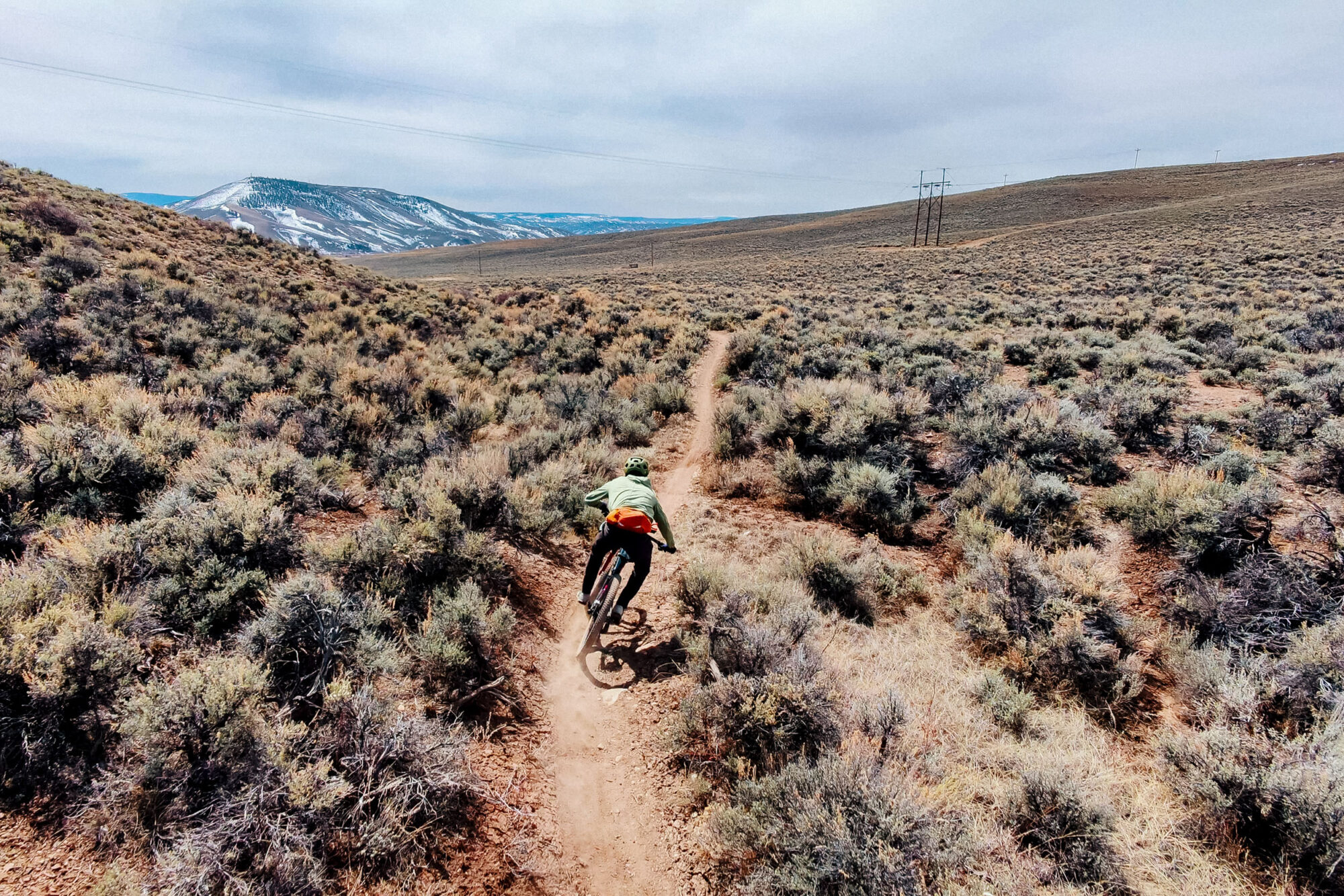
I tested this in both the open and locked-out suspension modes. While I usually leave the shock open on singletrack and still think that’s the most effective way to ride a bike on trails, the locked-out stiffness on the new version stood out. Unlike the older Spearfish, where there always seemed to be a bit of give when locked out, this one feels firm and efficient. That’s something riders will appreciate during long wilderness detours on routes like the Colorado Trail.
Overall, it has a real sense of urgency—the kind of responsiveness you want from a short-travel XC rig. Could it be faster? Yeah, maybe. But the long wheelbase is a small trade-off for the stability it offers at speed. And with the extended front center and steep seat tube angle, the bike keeps the rider’s weight centered and climbing position dialed. I particularly noticed this on some super steep powerline roads just last week.
What truly sets this version of the Spearfish apart from the previous model and most XC bikes is its front-center length and how it offers a level of stability you don’t usually get in this class. I haven’t ridden the Transition Spur in a while, but the Spearfish reminded me of its descending confidence right away, just with better climbing traits.
Of course, it’s still an XC bike. It’s not going to soak up the biggest hits out there. But once you dial in your rebound on the rear shock, I think you’ll be surprised at how well it handles rough descents. Fast and smooth trails are no problem, either. I found myself going pretty fast without even thinking about braking, and that’s always a good sign.
The overall ride quality leans solidly into the “downcountry” category. It has a trail bike attitude with XC race efficiency. It’s hard to define exactly, and maybe that’s the point. It’s limited in travel, sure, but it makes up for it with progressive geometry that inspired me to ride harder, try new lines, and tackle stuff I wouldn’t even think about on a traditional XC bike.
Bikepacking Features
Salsa continues to design bikes with adventure in mind, and the new Spearfish is no exception. If and when I ride the Colorado Trail again, I’d still opt for a full-suspension bike. I want something that’s capable on descents but tracks better over the rocky and rough assents. The Spearfish fits that bill, and I imagine it will for many other riders, too.
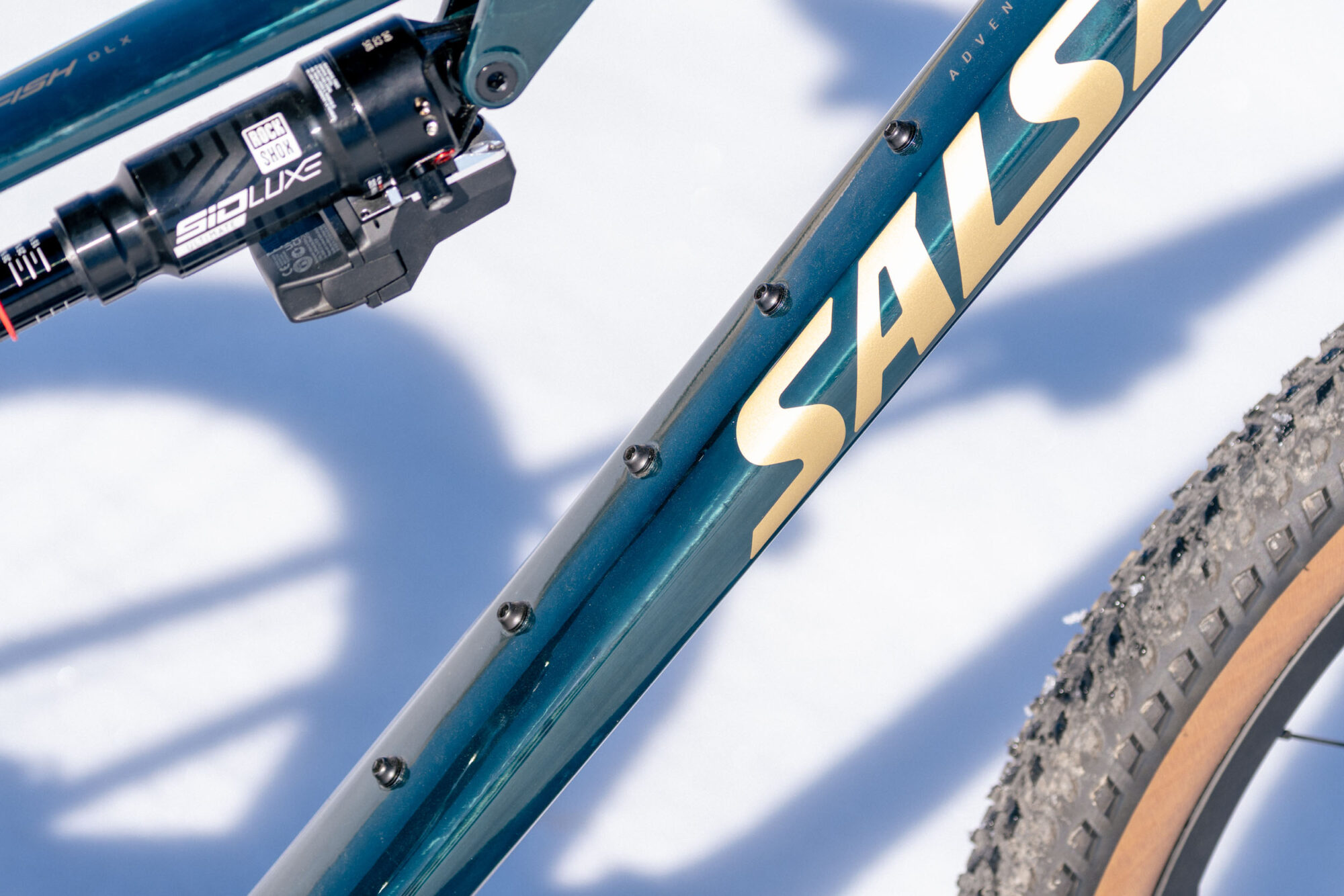
While I haven’t taken it on an overnighter just yet, I did load it up, and it feels solid. It’s noticeably stiffer than the Pivot Mach 4 SL. It also has more space and mounting options. Salsa isn’t making a dedicated frame bag for this version yet, but there are plenty of mounts inside the triangle for a custom frame bag or two or three bottles, depending on your bottle and frame size. There are also top tube mounts for a bolt-on bag or a GPS unit. Plus, it still offers a nice handhold right above the shock for hiking with your bike.
Build Kit
When Salsa told me they were sending the bike before launch, I was excited. I got the deck and spec sheet, and they said it would come with the XO AXS Transmission. It sounded great. But when the bike showed up, it had Flight Attendant, not something a bikepacker would really consider, but I know it has gained traction in the XC race world.
I double-checked the deck and was a little surprised at the price. I would’ve been perfectly happy on a GX build, but I’m glad I had the chance to test the Deluxe carbon version, as the lighter frame really does keep the overall weight down.
Now, about Flight Attendant. It’s pretty wild. Setting it up was slightly frustrating, as I hate reading directions, but I had to as I didn’t know I needed to set the fork up first for it to work correctly. Once I got it going, it worked as advertised. Flight Attendant is RockShox’s electronically controlled suspension system that adjusts the fork and shock in real-time based on terrain and rider input. It uses sensors in the fork, shock, and crank to decide whether to stay open, go to pedal mode, or lock out, all without you touching a switch or lever.
Salsa Spearfish Build Kit
- Fork: RockShox SID Ultimate Flight Attendant, 120mm
- Rear Shock: RockShox SIDLuxe Ultimate Flight Attendant
- Rear Derailleur: SRAM X0 Eagle AXS Transmission
- Cassette: SRAM X0 Eagle Transmission XS-1295, 10-52t, 12-speed
- Chain: SRAM X0 Eagle Transmission Flattop
- Crankset: SRAM X0 Eagle Transmission Power Meter cranks w/32t chainring, MRP 1x SL chainguide
- Shifter: SRAM AXS Pod Rocker, right and left w/ MatchMaker X clamps
- Brakes: SRAM Hydraulic
- Rotors: SRAM CenterLine X (6-bolt w/ titanium bolts, 180mm front and rear)
- Headset: FSA Orbit 1.5E ZS NO.57E
- Stem: Aluminum CNC
- Handlebar: Salsa 35.0 Guide Carbon
- Grips/Tape: WTB Wavelength Lock-On
- Seatpost: RockShox Reverb AXS, XS: 125mm; SM–MD: 150mm; LG–XL: 170mm
- Saddle: WTB Silverado, Medium, Steel SL, Fusion Form
- Front Wheel: WTB Frequency 110 x 15mm, WTB CZR Trail Carbon i30, 28h
- Rear Wheel: WTB Frequency 148 x 12mm, WTB CZR Trail Carbon i30, 28h
- Tires: Teravail Camrock 29 x 2.4″ tires, Light Trail, tan, WTB TCS sealant
It’s clearly designed for racers. I found it fun for high-effort power-hour laps, but I actually pulled the batteries to test the bike without it. Thanks to the Split Pivot, the bike still climbs incredibly well even without a lockout. So, while it’s a nice tech showcase, I don’t think I’d ever pay for it. I felt like the Sid fork had more flex than I would like, too.
The build also came with the SRAM AXS dropper (the older version, which is still super fast). The medium came with a more XC-oriented 150mm dropper, but I could fit a longer one if I were building it out for trail use.
And, of course, it came with the XO AXS Transmission. I’ve had a few concerns with Transmission on other bikes over the past few months, but there’s something to be said for riding it on a frame built around it. It really does shine here. Still, I can’t help but soft-pedal when I shift—it’s just human nature.
The build came with SRAM’s new Motive brakes, which felt surprisingly good, but SRAM brakes always feel good off the bat. They don’t offer that bite like like Shimano XT, but for a bike like this, I don’t mind that.
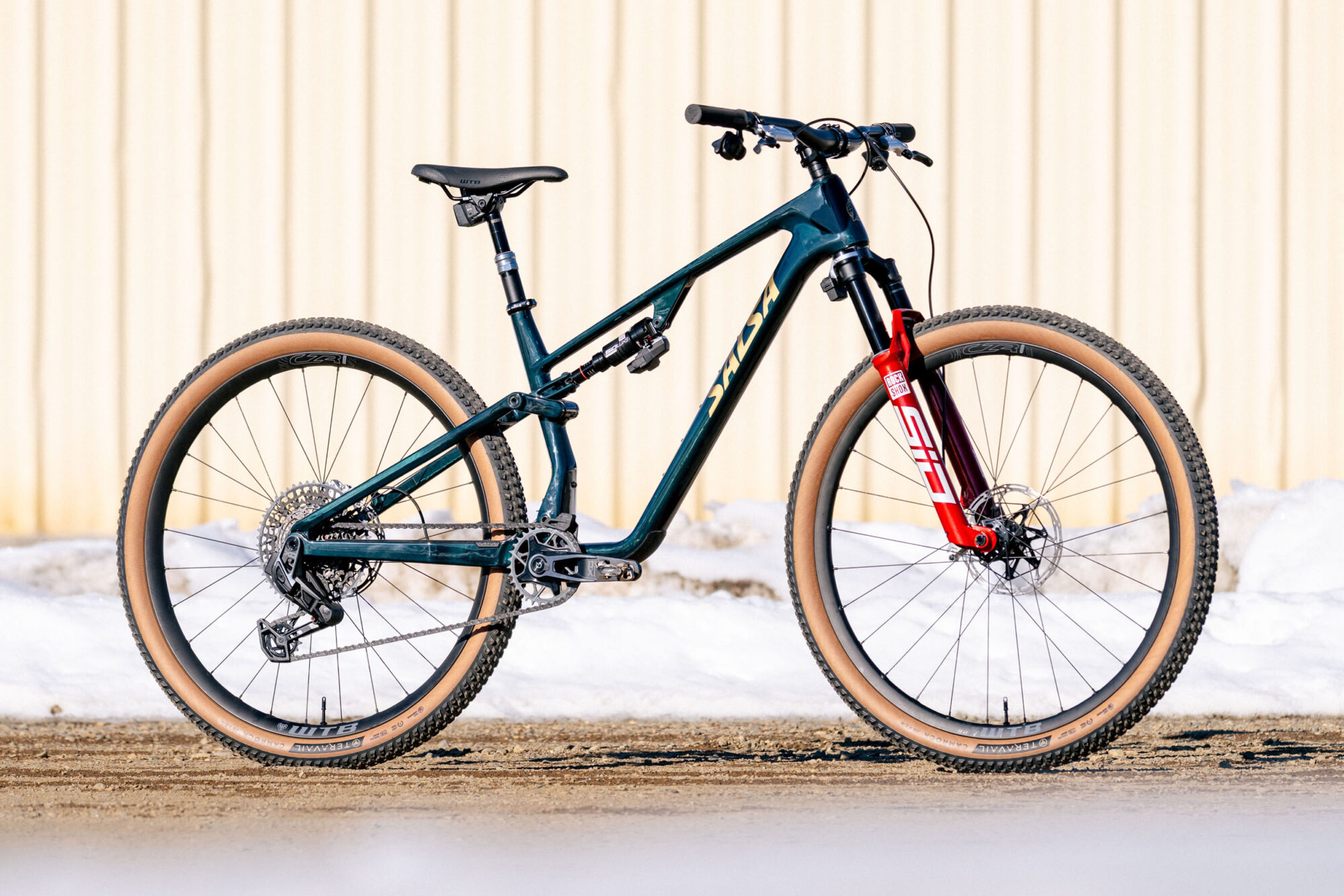
The WTB CZR/Frequency wheels on this build are incredibly light—another perk of the top-end spec. It also came with Teravail’s new Camrock tires. I wasn’t expecting much based on the tread, but they impressed me with their grip and roll extremely well. Other details include a 35mm stem, 800mm carbon bars with (I think) a 20mm rise, and a WTB Silverado saddle, which I’ve come to really like. Rounding out the build was a solid finishing kit specced with XC efficiency and trail potential in mind.
What Could Be Improved
Overall, it’s hard not to like this bike as is, but it could be better. First: in-frame storage. It’s quickly becoming a standard feature on carbon frames from competing brands, and I’d love to see it on the Spearfish. Given Salsa’s commitment to bikepacking, in-bike cargo just feels like a natural fit. Plus, it’s a great spot to store your tools for day rides.
Second: the fork. Salsa mentioned they considered 100mm and 120mm travel versions of this bike. While the rear shock can be swapped to adjust rear travel, I’d love to try this bike with a 130mm fork (and something stiffer than the SID). This latest SID is much better than earlier versions, especially the one I rode in 2015, but it’s still a little flexy and proved to be distracting in rougher terrain.
Third: In today’s world, I get that using resources takes time, and building an alloy version is just one more thing on a brand’s plate. But with how expensive bikes have become, I think offering an aluminum option should be standard. It helps open the door to more riders, especially when wages aren’t going up, but the cost of everything else is. This is not only a call on Salsa but every other brand, too.
Price
Make no mistake: these things aren’t cheap, especially the one I tested. It might even be the most expensive bike I’ve ever reviewed. The Deluxe XO build comes in at $11,499 USD. The Deluxe GX Eagle version is $6,499, and the Deluxe frameset alone is $3,499, which is probably the route I’d go. The Transmission build is $4,999, and there’s also a Deore 12-speed carbon build at $3,999.
- Model Tested: 2025 Salsa Spearfish C Deluxe XO, Medium
- Actual Weight (no pedals): 26.73 pounds (12.12 kilograms)
- Place of Manufacture: Taiwan
- Price: $11,499
- Manufacturer’s Details: Salsa Cycles
Pros
- Incredibly inspiring, from technical descents to smooth singletrack
- Fleet-footed, with a sense of urgency you’d expect from an XC bike
- Those traits usually aren’t mutually exclusive, making for a fast, fun, and capable bike
- Huge frame space for two or even three bottles or a large custom frame bag
- Colorway and industrial design look stunning
Cons
- This particular build isn’t bikepacking-focused
- Expensive
- Press-fit bottom bracket
- Limited tire clearance
Wrap Up
There are a lot of incredible bikes on the market right now, and realistically, most new bikes will make most riders pretty happy. Bikes have come a long way. But this might be one of the first times Salsa is really ahead of the curve in what I’d call progressive design.
I don’t know of another bike that pairs a 66+ degree head tube angle and a 1,200mm wheelbase and maxes out at 120mm of rear travel. Add in the proven Split Pivot suspension, huge frame space for bottles and bags, and a ride quality that just makes you want to keep pushing, and it’s clear the fourth-generation Spearfish is something special. It’s efficient. It’s stable. It climbs well. And it’s fun. It’s the kind of bike that doesn’t just tick boxes; it makes you want to ride more. If you prioritize long-day pedaling efficiency but still want a bike that rips, the new Spearfish is absolutely worth a look.
Further Reading
Make sure to dig into these related articles for more info...
Please keep the conversation civil, constructive, and inclusive, or your comment will be removed.


